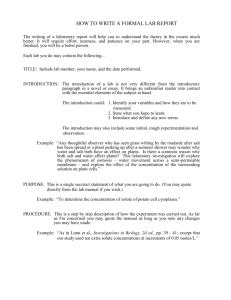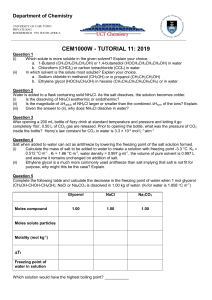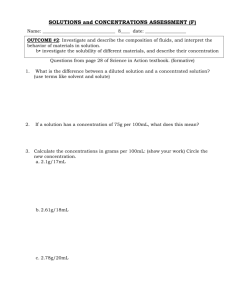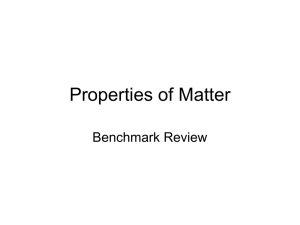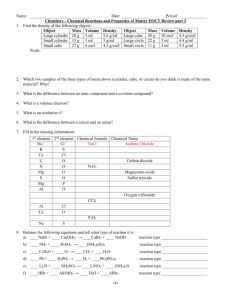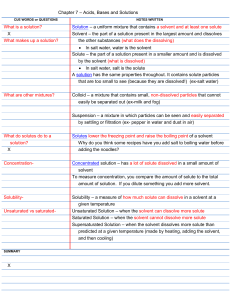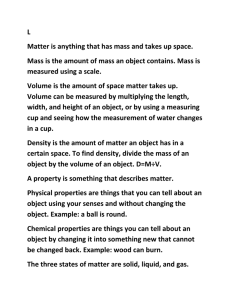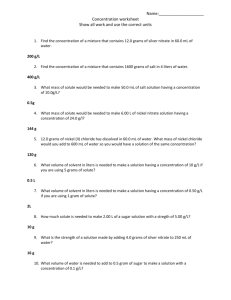Physical and Chemical Properties Solutions, Density, States of
advertisement
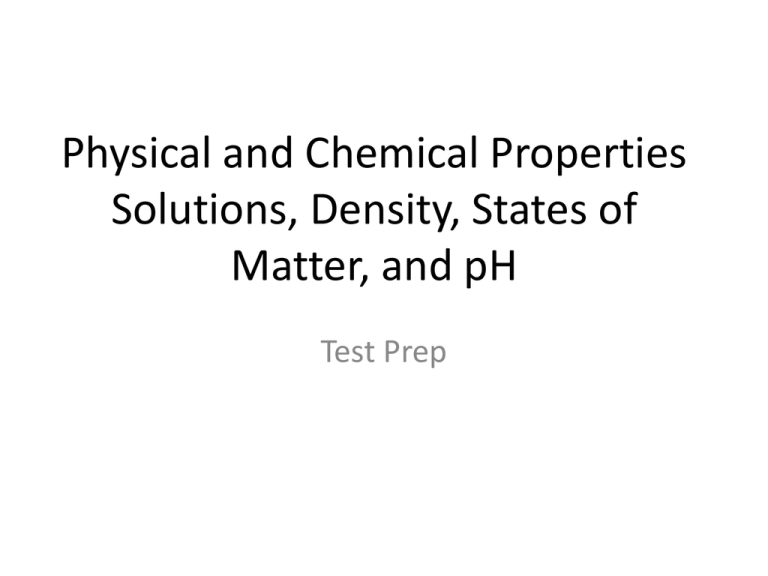
Physical and Chemical Properties Solutions, Density, States of Matter, and pH Test Prep • • • • • • • • • • Chemical or Physical Change A Log Burning Evaporation of gasoline Sawing wood Rusting nail Exploding fireworks Toasting a marshmallow Freezing water Crushing a can Rotting egg Boiling water •Photosynthesis •Melting of Ice Cube •Burning Paper •Cooking an egg over easy •Crystallization of sugar •Evaporation of alcohol •Corrosion of iron •Shape of an apple •Vinegar and baking soda making salt and water •Burning of methane gas producing water and carbon dioxide •Formation of silver sulfide when silver reacts with sulfur •Condensation of water vapor on the outside of a can • is mass lost, gained, or new substances formed in a chemical change? • Is a new substance formed in a physical change? Density • A piece of metal has a mass of 35g as determined on a balance. When the piece of metal is placed in a graduated cylinder that has 25ml of water in it, the water is displaced to 32ml. What is the density of the piece of metal • • • • Density of liquid A is 0.78g/ml Density of liquid B is 1.45g/ml Density of liquid C is 1.00g/ml All are layered in a graduated cylinder. What is the order top to bottom? • Place the following in order from most dense to least dense: gas; solid; liquid; plasma • What if the material is water? • Which is more dense, Ice or water? • What does that mean about the atoms in the water molecule as opposed to the ice molecule? • The hundreds scale on a triple beam balance reads 100. The tens scale reads 20 and the ones scale reads 5. The box on the scale is 5cm x 5cm x 5cm. What is the density? • 100+20+5=125g • 5x5x5=125cm3 • Density =1gm/cm3 • D=M/V • 35/32-25= • 35/7=5g/ml • The density of iron is 7.9g/cm3 • The density of silver is 10.5g/cm3 • Assuming the mass is the same, which would have the greatest volume? Solutions • Process by which the positive and negative ions of a crystalline solid separate in water is called A. Saturation B. Ionization C. Dissociation D. Solution • How do you decrease the rate of a solid solute going into a liquid solution? • How do you INCREASE the rate of a solid solute dissolving in water? • Which statement about water is true? A. Water is a polar substance B. Water is made of 2hydrogen and oxygen molecules C. Water is made of 2 hydrogen and an oxygen atom D. Water is an atom composed of many molecules • Holding less solute than the solvent can hold at a given temperature • Holding more solute than a solvent can hold at a given temperature • Holding all the solute a substance can hold at a given temperature • If you make a solution of 12g of salt in 24g of water what will the mass be of the resulting solution? • Adding more solute to a solvent (increases or decreases) the freezing point of the solvent and (increases or decreases) the boiling point • Water is a ___________ • Salt is a _____________ • A solution is what type of mixture? • In order to increase the solubility of a gas in a liquid what would you do to the temperature and pressure? pH • In order to neutralize a base you would add ? • In order to neutralize an acid you would add ? • • • • • • A substance has a pH of 12 and tastes bitter A substance has a pH of 7 A substance has a pH of 2 and is sour A substance that feels slippery Alkaline Water • Substance that allows small amounts of acids or bases to be absorbed without harmful effects to the body is • A. Buffer B. Ester C. Enzymes D. Precipitate • pH measures the __________ of hydronium ions H3O+present in solution • A. Strength b. Concentration • c. Neutralization d. Versatility • H3O+ • OH- • Type of chemical reaction in which an acid mixed with a base forms a salt and water • A. Neutralization B. Decomposition • C. Dilute D. Concentrated • A substance that changes color in the presence of an acid or base like the litmus paper or bromthymol blue • A. Acid B. Buffer C. Indicator D. Glycerin Phase Changes • Substance that has a definite volume but no definite shape • Substance that has a definite volume and shape • Substance that spreads evenly throughout a container • Particles move quickest in which phase • Particles move slowest in which phase • A gas-like mixture with no definite volume or shape that is made up of positively and negatively charged particles • • • • • Solid to liquid Liquid to gas Solid to gas Liquid to solid Gas to liquid • Most matter (contracts, expands) when heated. • Most matter (contracts, expands) when cooled. • Which has the greatest kinetic energy a solid, liquid or gas?

